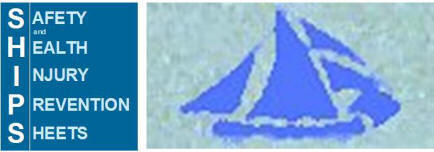Shipbuilders face a number of challenges related to working in hot conditions. Not only do hot environments pose several hazards, such as dehydration and heat exhaustion,
they also contribute to other problems.
Ambient air temperatures and surface temperatures of the ship’s metal structure can rise dramatically during the workshift. Working in these hot environments results in fatigue and dehydration. Dehydration can hasten the onset of muscle fatigue
and cause disorientation, loss of balance, cramps, fainting and eventually heat stroke. In a disoriented state, an employee is also at greater risk of injury such as falling.
The effects of working in hot temperatures are exacerbated when shipfitters must wear a lot of equipment, including protective clothing, welding hoods, heavy gloves and work boots, and respirators. In addition, the use of some tools and machinery
can add to the heat buildup.
Maintaining proper hydration is essential to minimize the risk of heat stroke and other heat related problems. When employees work in hot temperatures, particularly if tasks involve heavy manual work, dehydration can occur very quickly. Employers
need to provide adequate amounts of cool water at work areas. Employees should be encouraged to drink 4 to 8 ounces of water every 15 minutes. During rest breaks employees may also drink sports drinks as an acceptable alternative for fluid replacement.
However because of the possibility of over hydration, employees should also be cautioned to limit their fluid intake to no more than 1 ½ quarts per hour and no more than 12 quarts of fluid in a 24 hour period.
For additional information, see OSHA’s Safety and Health Topics Page on Heat Stress, as well as the U.S Forest
Service Fire and Aviation Management’s Heat Stress Brochure.
 |
|
|

